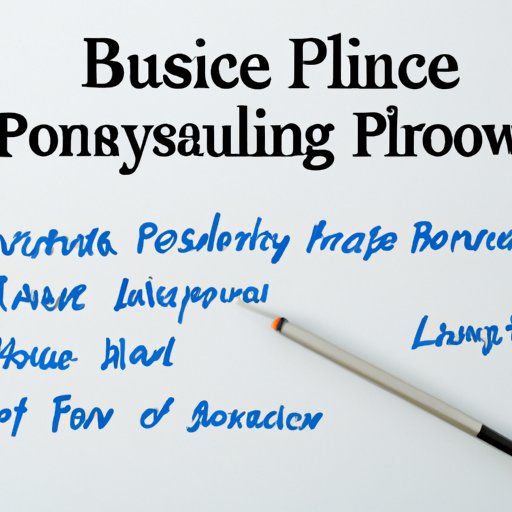Introduction
Plastic surgery is a surgical procedure that involves reshaping or reconstructing parts of the body to improve their appearance. It is used to correct physical defects, enhance facial features, and improve self-esteem. With the advances in technology and greater access to medical care, more and more people are turning to plastic surgery as a way to improve their looks and feel better about themselves.
However, plastic surgery is expensive and not everyone can afford it. This has led to the emergence of financing options which allow people to pay for their procedures over time. In this article, we will explore how financing plastic surgery works, the different options available, and the associated costs.
Exploring the Different Financing Options for Plastic Surgery
There are several financing options available for those who want to undergo plastic surgery. These include traditional bank loans, credit cards, personal loans, and medical financing. Each option has its own set of pros and cons and should be considered carefully before making a decision.
Traditional Bank Loans
Traditional bank loans are one of the most common ways to finance plastic surgery. They typically have lower interest rates than other forms of financing and can be used for any type of procedure. However, they also require a good credit score and the approval process can take some time.
Credit Cards
Credit cards are another popular option for financing plastic surgery. They are easy to apply for and can be used to cover the cost of the procedure. However, they often have high interest rates and can quickly become unmanageable if not managed properly.
Personal Loans
Personal loans are unsecured loans that can be used for many different purposes, including plastic surgery. They typically have lower interest rates than credit cards and can be used for any type of procedure. However, they often require a good credit score and the approval process can take some time.
Medical Financing
Medical financing is a type of loan specifically designed to cover the cost of medical procedures, including plastic surgery. These loans typically have low interest rates and flexible repayment terms. However, they are usually only available to those with excellent credit scores.

Comparing Costs of Plastic Surgery and Financing Alternatives
The cost of plastic surgery varies depending on the type of procedure, the surgeon, and other factors. It is important to research the cost of the procedure before deciding to move forward. Additionally, it is important to compare the costs of different financing options before choosing one.
The Cost of Plastic Surgery
The cost of plastic surgery depends on the type of procedure, the complexity of the surgery, the experience level of the surgeon, and other factors. Common procedures such as breast augmentation and liposuction typically range from $3,000 to $10,000. Complex procedures such as facelifts, tummy tucks, and rhinoplasty can cost up to $20,000 or more.
Interest Rates and Fees of Financing Options
When comparing financing options, it is important to consider the interest rate and any additional fees associated with the loan. Traditional bank loans typically have lower interest rates than credit cards, but they may also have higher fees. Personal loans and medical financing often have lower interest rates than credit cards, but they may also require a good credit score and have longer approval times.
The Pros and Cons of Financing Plastic Surgery
Financing plastic surgery can be beneficial in certain situations, but there are also potential drawbacks. It is important to carefully weigh the pros and cons before deciding to move forward.
Advantages of Financing Plastic Surgery
The main advantage of financing plastic surgery is that it allows you to spread the cost of the procedure over time. This makes it easier to manage the expense and can help you avoid having to pay for the entire procedure upfront. Financing can also be beneficial if you have a limited budget or need to cover a large expense.
Disadvantages of Financing Plastic Surgery
The main disadvantage of financing plastic surgery is that it can be expensive. Interest rates and fees can add up quickly, making it difficult to keep up with payments. Additionally, if you are unable to make payments on time, you could end up with a poor credit score or even face legal action.

Managing the Risks and Benefits of Plastic Surgery Financing
Financing plastic surgery can be risky, but there are steps you can take to reduce the risks and maximize the benefits. Understanding the terms and conditions of the loan, establishing a payment plan, and shopping around for the best rates are all important considerations.
Understanding the Terms and Conditions of Financing
Before signing any loan agreement, it is important to read the fine print and understand all of the terms and conditions. Make sure you understand the interest rate, repayment period, and any additional fees associated with the loan.
Establishing a Payment Plan
Once you have chosen a financing option, it is important to establish a payment plan that works for your budget. Make sure to factor in the interest rate and any additional fees when creating your plan. Try to make payments on time and stick to the plan as closely as possible.
Shopping Around for the Best Rates
It is important to shop around for the best rates when financing plastic surgery. Compare different lenders to find the one with the lowest interest rate and fees. You can also look into special offers or discounts that may be available.

Understanding How Financing Plastic Surgery Works
Financing plastic surgery is a straightforward process, but it is important to understand how it works before applying for a loan. Here is an overview of the steps involved:
Working with a Financial Institution
The first step is to work with a financial institution to find the right loan for your needs. Make sure to compare different lenders to find the one with the best terms and lowest interest rate.
Applying for a Loan
Once you have chosen a lender, you will need to fill out an application. The lender will review your credit history and financial situation to determine if you qualify for the loan. If you are approved, you will receive the funds within a few days.
Receiving Funds
After you have been approved for the loan, the funds will be deposited directly into your bank account. You can then use the money to pay for your plastic surgery. Be sure to make your payments on time to avoid penalties and late fees.
Conclusion
Financing plastic surgery can be a great way to make your dreams come true. It is important to understand the different financing options available, the costs of the procedure, and the associated risks before making a decision. By carefully researching the different options and understanding the terms and conditions of the loan, you can make an informed decision and manage the risks and benefits of financing plastic surgery.
Resources for further information:
- American Society of Plastic Surgeons – Financing
- WebMD – Cosmetic Procedures: Financing
-
(Note: Is this article not meeting your expectations? Do you have knowledge or insights to share? Unlock new opportunities and expand your reach by joining our authors team. Click Registration to join us and share your expertise with our readers.)
